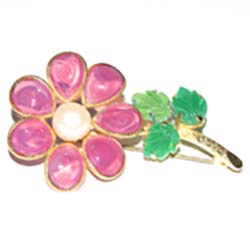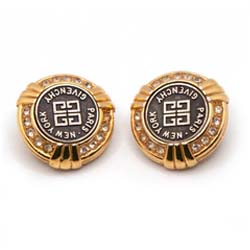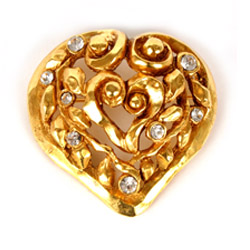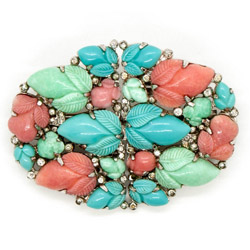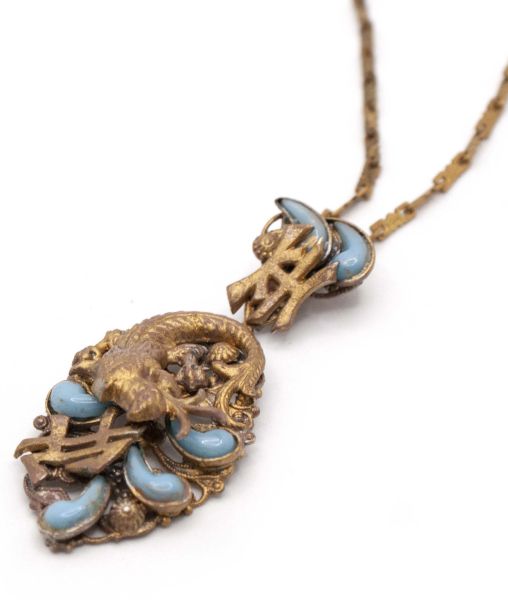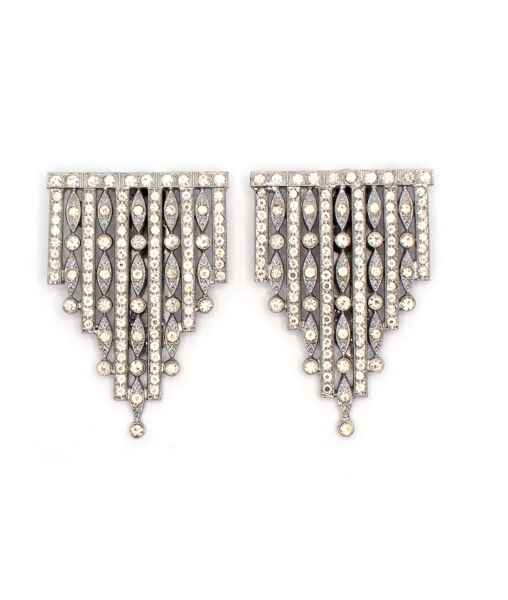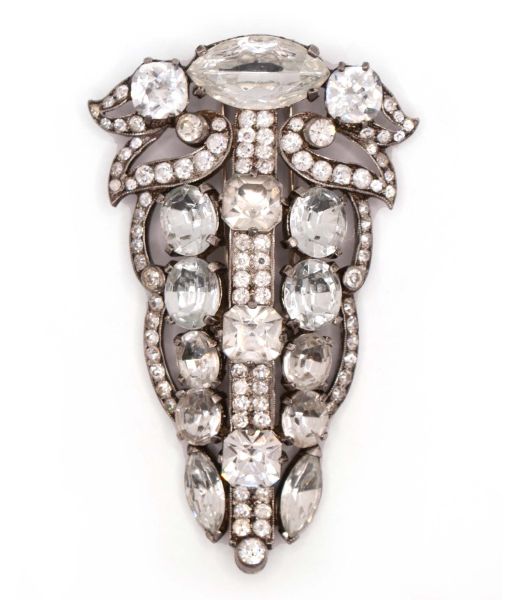The Characteristics of Art Deco Costume Jewellery
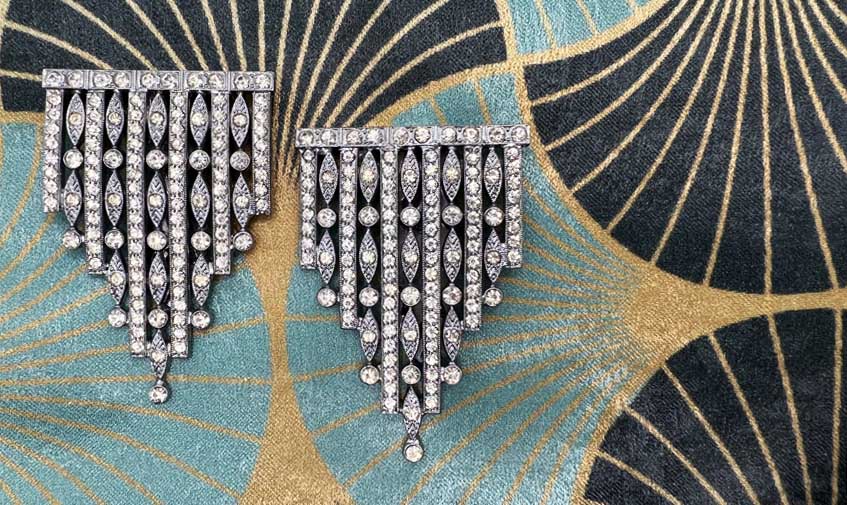
Art Deco was a distinct and influential art and design style that emerged in the 1920s and stretched through 1930s and into the early 1940s. It was characterized by bold geometric shapes and streamlined forms with lavish ornamentation.
How To Identify Art Deco Jewellery
Geometric Shapes : Art Deco jewellery often incorporates geometric shapes such as squares, triangles, circles, and rectangles. These shapes are used in both the overall design and the individual elements of the jewellery.
Symmetry: Symmetry is a key aspect of Art Deco design. Jewellery pieces are often symmetrical, with balanced arrangements of shapes, lines, and gemstones.
Streamlined and Simplified Forms: Art Deco jewellery emphasizes sleek and streamlined designs. The forms are often simplified and stylized, with clean lines and smooth surfaces.
Bold Colours: Vibrant colours are often present in Art Deco jewellery. Gemstones in bold hues, including deep blues, rich reds, and vivid greens, are frequently used to create striking contrasts and add visual interest.
Use of Contrast: Art Deco jewellery often combines contrasting elements to create visual impact. This includes contrasting colours, such as black and white, as well as contrasting materials.
Influence of Ancient and Exotic Cultures: Art Deco jewellery draws inspiration from a variety of sources, including ancient Egyptian, Aztec, and Asian cultures. These influences are reflected in the motifs, patterns, and symbols used in the designs. Read more about Egyptian Revival jewellery in our article on the topic.
Emphasis on Machine Age Aesthetics: The Art Deco movement emerged during the 1920s and 1930s, a period of industrialization and technological advancements. Art Deco jewellery often incorporated elements inspired by the Machine Age, such as streamlined forms, geometric patterns, and motifs representing speed and progress. The sunburst and sky scraper motifs, as seen in the main image, were particularly popular.
Overall, Art Deco is characterized by its emphasis on elegance, luxury, and modernity. It represents a celebration of the machine age and the desire for a more glamorous and optimistic future.
Art Deco Jewellery Designers
Fine Jewellery
Cartier is renowned for its exquisite Art Deco jewelry designs. The brand incorporated geometric shapes, bold colors, and a combination of materials such as diamonds, emeralds, sapphires, and rubies to create stunning pieces.
Van Cleef & Arpels is another prominent Art Deco jewelry designer. Their designs often featured bold, symmetrical patterns, vibrant gemstones, and intricate craftsmanship. The catalogue entries on their website showing some of their Art Deco jewellery are particularly interesting.
Costume Jewellery
Trifari, a prominent jewellery company, drew inspiration from Cartier during the 1930s. Many of Trifari's jewellery pieces from this period paid homage to the designs and styles popularized by Cartier. One notable example is Trifari's "tutti frutti" pieces, which were clearly influenced by Cartier's line of jewellery. The tutti frutti style featured colourful gemstones and intricate designs, often incorporating a combination of carved gemstones, enamel, and precious metals. Cartier's line of jewellery served as a source of inspiration for Trifari, and they recreated similar aesthetics in their own designs.
The Neiger Brothers were known for their jewellery collections that drew inspiration from various cultures, particularly those of Egypt and Asia. Their designs incorporated elements and motifs inspired by the artistic traditions and symbolism associated with these cultures. The Neiger Brothers' jewellery collections reflected the exoticism and fascination that the Western world had with Eastern and Egyptian cultures during the early 20th century. By incorporating these influences into their designs, the Neiger Brothers created unique and distinctive jewellery pieces that captured the spirit and aesthetics of these regions.
During the 1930s and 1940s, Eisenberg released a line of jewellery known as "Eisenberg Originals." These pieces were characterised by their geometric and symmetrical designs, which were popular during the Art Deco era. The Art Deco movement emphasized clean lines, bold shapes, and symmetry, and Eisenberg embraced these principles in their designs. The Eisenberg Originals often featured angular geometric forms, and the use of vibrant gemstones. The geometric and symmetric nature of these pieces reflected the aesthetic trends of the time and contributed to the overall elegance and sophistication of Eisenberg's jewellery designs.

